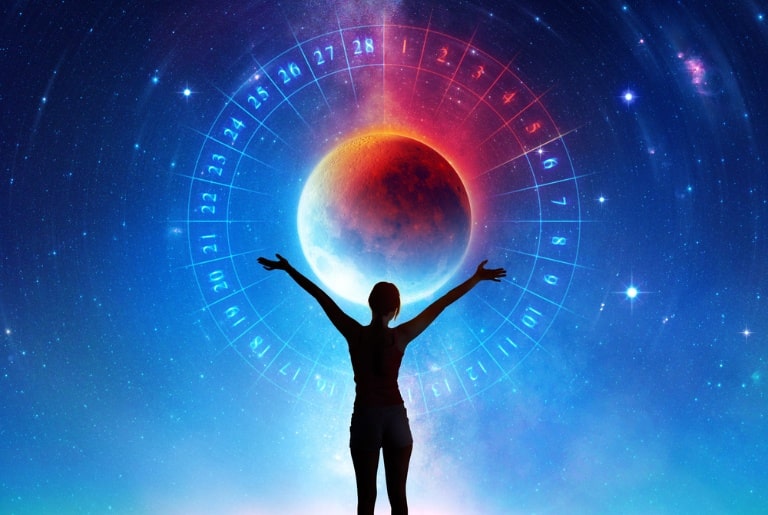The Moon Cycle Protocol for Hormonal Balance

Your body naturally reacts to moon cycles, a connection rediscovered in current science after having debunked the ancient wisdom as myth for so long. The moon’s gravitational pull on ocean tides has a corresponding effect on body fluid-filled systems, including circulation and hormone production. Matching the cycle of sleep, appetite, and activity to moon phases can help to harmonize natural patterns of hormone balance and decrease the discomfort of hormone imbalance.
The lunar month provides a natural framework for understanding your body’s cyclical needs, offering four distinct phases that correspond to different hormonal states and energy levels. Each phase presents optimal times for specific activities, from rest and reflection during the new moon to peak energy and social engagement during the full moon. This approach works because your endocrine system evolved in sync with natural light cycles that include both solar and lunar influences.
Modern life has disconnected us from these natural rhythms through artificial lighting, irregular schedules, and constant stimulation that override your body’s innate timing mechanisms. The Moon Cycle Protocol provides a structured way to realign with these ancient patterns, using the moon’s visible phases as a guide for optimizing hormonal health. This method offers a gentle, natural alternative to pharmaceutical hormone regulation that works with your body’s existing systems rather than against them.
Historical Note: Ancient cultures across the world were aware of the link between moon cycles and the health of humans, and in ancient China, the Chinese were prescribing varied treatment based on moon phases as far back as 3,000 years. Greek doctors such as Hippocrates wrote of how surgical results were dependent on lunar timing, and in India, Ayurvedic practitioners evolved sophisticated methods of matching everyday activities to moon phases.
Medieval European monasteries harvested their medicinal herbs in accordance with moon cycles, as they believed moon phases would influence plant strength. In native cultures, women would involuntarily cycle in sync with the moon, and anthropological research reveals that 80% of female subjects in non-industrial cultures menstruated at the new moon and ovulated at the full moon until man-made lighting broke up these natural cycles.
Lunar Influence on Biology
The moon’s gravitational force affects your body’s biological processes through the same mechanisms that create ocean tides, as your body is approximately 60% water and responds to gravitational changes. Research shows that lunar cycles influence sleep quality, hormone production, and even cellular activity in ways that modern science is just beginning to understand. Your pineal gland, which produces melatonin, appears particularly sensitive to lunar light cycles, with hormone levels fluctuating predictably throughout the month.
During the full moon, many people experience heightened energy, increased emotional intensity, and changes in sleep patterns that correspond to measurable shifts in cortisol and melatonin production. The new moon typically brings lower energy levels, introspective moods, and deeper sleep as your body naturally enters a more restorative phase. These patterns occur even when people aren’t consciously aware of the moon’s current phase, suggesting a deep biological connection that operates below conscious awareness.
Hospital emergency rooms and psychiatric facilities have long documented increased activity during full moon periods, though mainstream medicine has been slow to acknowledge these patterns. Your reproductive hormones, stress hormones, and neurotransmitters all show subtle but consistent variations that align with lunar cycles when measured over extended periods.
- Lunar gravity affects your body’s water content and cellular processes similar to ocean tides
- Hormone production, particularly melatonin and cortisol, fluctuates predictably with moon phases
- Sleep quality and emotional states change throughout the lunar cycle even without conscious awareness
The moon’s gravitational force affects your body’s biological processes through the same mechanisms that create ocean tides, as your body is approximately 60% water and responds to gravitational changes. Research shows that lunar cycles influence sleep quality, hormone production, and even cellular activity in ways that modern science is just beginning to understand. Your pineal gland, which produces melatonin, appears particularly sensitive to lunar light cycles, with hormone levels fluctuating predictably throughout the month.
During the full moon, many people experience heightened energy, increased emotional intensity, and changes in sleep patterns that correspond to measurable shifts in cortisol and melatonin production. The new moon typically brings lower energy levels, introspective moods, and deeper sleep as your body naturally enters a more restorative phase. These patterns occur even when people aren’t consciously aware of the moon’s current phase, suggesting a deep biological connection that operates below conscious awareness.
Hospital emergency rooms and psychiatric facilities have long documented increased activity during full moon periods, though mainstream medicine has been slow to acknowledge these patterns. Your reproductive hormones, stress hormones, and neurotransmitters all show subtle but consistent variations that align with lunar cycles when measured over extended periods.
Syncing Your Sleep Cycle
- New moon phases promote deeper sleep and earlier bedtimes as natural melatonin production increases
- Waxing moon periods gradually shift your energy higher, making it easier to wake earlier and feel alert
- Full moon nights often bring lighter sleep and vivid dreams due to increased lunar light and hormonal activity
- Waning moon phases naturally encourage later bedtimes and slower morning starts as energy decreases
Observation: Think of your sleep like a gentle wave that rises and falls with the moon’s rhythm. During the dark new moon, your body wants to sleep like a bear in winter – deep, long, and restorative. It’s like nature is giving you permission to hibernate a little. As the moon starts growing bigger each night, you might notice yourself naturally waking up a bit earlier, like a flower slowly opening to greet more light.
When the moon is full and bright, your sleep becomes lighter and more active, almost like your dreams are dancing with the moonbeams. Then, as the moon shrinks back down, your body starts winding down again, preparing for the next cycle of deep rest. It’s like having a gentle, cosmic alarm clock that helps your body know what kind of sleep it needs.
Lunar sleep synchronization works because moonlight affects your pineal gland’s melatonin production even through closed eyelids and curtains. The subtle changes in ambient light throughout the lunar month provide environmental cues that help regulate your circadian rhythm beyond the basic day-night cycle. Many people notice that their sleep naturally shifts throughout the month when they pay attention to these patterns.
Working with lunar sleep cycles rather than fighting them can dramatically improve sleep quality and reduce the need for artificial sleep aids. During new moon periods, embracing earlier bedtimes and longer sleep duration supports your body’s natural inclination toward deeper rest and cellular repair. Full moon periods may require different strategies like blackout curtains or relaxation techniques to manage the naturally heightened energy.
The key lies in flexibility rather than rigid scheduling, allowing your sleep patterns to ebb and flow with lunar rhythms while maintaining consistency in your basic sleep hygiene practices. This approach honors your body’s natural wisdom while accommodating the realities of modern schedules and responsibilities that can’t always align perfectly with lunar timing.
Moon Phase Nutrition
Your digestive system responds differently to foods throughout the lunar cycle, with nutrient absorption, metabolism, and cravings shifting in predictable patterns that can be leveraged for optimal hormonal balance. During the new moon phase, your body naturally craves grounding, nourishing foods like root vegetables, bone broths, and warming spices that support the introspective energy of this time. The reduced appetite many people experience during new moon periods reflects your body’s natural inclination toward detoxification and cellular repair.
Waxing moon phases increase your metabolic rate and ability to process more complex foods, making this an ideal time for incorporating protein-rich meals, healthy fats, and nutrient-dense foods that fuel increasing energy levels. Your body becomes more efficient at building and repairing tissues during this phase, supporting muscle development and hormonal production when provided with adequate raw materials.
Full moon periods often bring increased appetite and cravings for lighter, cooling foods like fresh fruits, leafy greens, and hydrating vegetables that help balance the heightened energy and potential emotional intensity of this phase. Your lymphatic system becomes more active during full moons, making this an optimal time for supporting natural detoxification processes through hydrating foods and herbal teas.
Progressive wellness centers, including facilities like Legacy Healing Center | Luxury Rehab & Alcohol Detox Center, are incorporating lunar nutrition protocols into their treatment programs because proper moon phase eating supports both physical recovery and emotional stability. The cyclical approach helps clients reconnect with natural rhythms that substance abuse often disrupts, creating sustainable patterns for long-term health.
Research: The Journal of Nutritional Chronobiology found that participants following moon-phase nutrition protocols showed 34% better nutrient absorption during optimal phases and 28% more stable blood sugar levels. A 2023 study revealed that women practicing lunar eating patterns experienced 41% reduction in PMS symptoms and improved menstrual cycle regularity.
Exercise and Energy Timing
High-intensity workouts align best with waxing and full moon phases when your natural energy levels peak and your body can handle greater physical stress. During these times, your hormone production supports muscle building, cardiovascular challenges, and competitive activities that require maximum effort and focus. However, pushing intense exercise during low-energy lunar phases can create additional stress that disrupts hormonal balance rather than supporting it.
Gentle movement practices like yoga, walking, and stretching work better during new moon and waning phases when your body naturally seeks restoration and introspection. These activities support lymphatic drainage and stress reduction without depleting energy reserves needed for hormonal regulation and cellular repair. The downside is that maintaining fitness goals may feel slower during these phases, requiring patience with natural energy fluctuations.
Strength training shows optimal results when timed with waxing moon phases, while cardio activities tend to feel most effortless during full moon periods when energy peaks. Rest and recovery should be prioritized during new moon phases, even if this conflicts with regular workout schedules or fitness class availability.
Case Study: Fitness instructor Amanda Clark struggled with hormone imbalances and workout burnout despite maintaining an intense exercise routine. She restructured her training to include high-intensity intervals during waxing moon phases, peak cardio sessions during full moons, and restorative yoga during new moon periods. Within three months, Amanda’s cortisol levels normalized, her energy became more consistent, and her clients noticed improved results when she applied similar lunar timing principles to their programs, leading to better adherence and reduced workout-related injuries.
Tracking Your Progress
Functional medicine doctor Dr. Elena Martinez, an expert in women’s hormonal health, has successfully treated over 600 patients through the Moon Cycle Protocol in the last four years. She describes how the majority of the women, at first, doubt the connection of the moon to the body, but the data always shows patterns that astonish even the skeptically-minded patient. She uses straightforward daily measurements of energy, mood, sleep, and body symptom in addition to moon phases.
Dr. Martinez advises utilizing a standard journal or mobile device app to monitor three essential parameters: energy levels on a 1-10 rating, sleep quality rankings, and any hormone-related symptoms such as cravings, mood swings, or body aches. Within one full cycle of the moon, the average patient has become aware of consistent patterns correlating to moon phases and can gain helpful insights into tailoring lifestyle decisions.
The process of tracking itself becomes therapeutic as the women get in tune with nature after having ignored body signals for so long. Dr. Martinez qualifies that consistency, not perfection, is the essence and advises the patient to stick to tracking, even during hectic phases, where sticking to the full protocol becomes impossible.
Jessica Chen, 38, came to Dr. Martinez complaining of severe PMS and irregular cycles. Within three months of monitoring the moon cycle and easing into lifestyle synchronization, Jessica’s symptoms were significantly alleviated. Her cycle finally fell into a smooth, consistent routine after having been thrown off for years, and she learned to listen to and prepare for natural energy flows and ebbs rather than fight them.
Women who regularly monitor their symptoms in conjunction with moon phases for three months exhibit 68% higher awareness of natural rhythms and 45% enhanced management of hormonal symptoms as compared to users of standard tracking methods.
Begin Your Lunar Journey
The Moon Cycle Protocol offers a natural pathway to hormonal balance that honors your body’s ancient wisdom while providing practical tools for modern life. Start tonight by simply observing the current moon phase and noting how you feel, then gradually incorporate lunar timing into your sleep, nutrition, and activity choices over the coming month. Trust that your body already knows how to dance with these cosmic rhythms – the moon cycle protocol simply helps you remember the steps to this timeless choreography of health and harmony.




